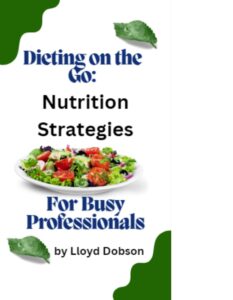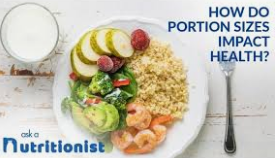Tag: meal planning
How To Diet With a Busy Work Schedule
How To Diet With a Busy Work Schedule?
Dieting on the Go: Nutrition Strategies For Busy Professionals.
The Challenges of Eating Well on a Tight Schedule

eBOOK $2.99
The challenges of eating well on a tight schedule are significant for many middle-aged adults balancing demanding careers and personal responsibilities. The fast pace of modern life often leads to rushed meals, reliance on convenience foods, and a lack of nutritional planning. As work commitments expand, the time available for meal preparation shrinks, making it difficult to maintain a healthy diet. Many professionals find themselves caught in a cycle of grabbing quick, unhealthy options, which can lead to weight gain and decreased energy levels, negatively impacting both work performance and overall health.
Are you ready to take control of your health and fitness but struggling to find the time due to a demanding job? If so, meal planning is key. In this blog post, we’ll explore how to plan your meals ahead of time when you have a busy work schedule. Let’s get started!
Introduction: Why Meal Planning is Important for Busy Professionals
Meal planning is essential for busy professionals who want to maintain a healthy diet. It helps you save time, reduce stress, and make healthier food choices. By taking the time to plan your meals in advance, you can avoid last-minute trips to the drive-thru or ordering unhealthy takeout. With a little bit of preparation, you can enjoy delicious, nutritious meals that fuel your body and mind.
Section 1 Title: How to Set Realistic Goals and Expectations for Your Diet
The first step to successful meal planning is setting realistic goals and expectations for your diet. This means being honest with yourself about your lifestyle, preferences, and limitations. For example, if you travel frequently for work, you may not be able to cook elaborate meals every night. Instead, focus on simple, portable options that are easy to prepare on the go.
Once you have a clear understanding of what you need from your diet, it’s time to start planning. Consider using an app or website like MyFitnessPal to track your calories and macronutrients (protein, carbs, fat). This will help you stay on track towards achieving your weight loss goals while still enjoying the foods you love.
Section 2 Title: The Best Foods to Include in Your Meal Plan
 Now that you know what you’re aiming for, let’s talk about the best foods to include in your meal plan. A balanced diet should consist of whole grains, lean proteins, fruits, vegetables, and healthy fats. Here are some examples of each category:
Now that you know what you’re aiming for, let’s talk about the best foods to include in your meal plan. A balanced diet should consist of whole grains, lean proteins, fruits, vegetables, and healthy fats. Here are some examples of each category: * Whole Grains: Quinoa, brown rice, oatmeal, whole wheat bread
* Lean Proteins: Chicken breast, turkey bacon, fish, Greek yogurt
* Fruits: Apples, bananas, berries, citrus fruits
* Vegetables: Broccoli, spinach, kale, sweet potatoes
* Healthy Fats: Avocado, nuts, seeds, coconut oil
By incorporating these foods into your meal plan, you’ll ensure that you’re getting all the necessary vitamins, minerals, and nutrients your body needs to function at its best.
Section 3 Title: Tips for Preparing Healthy Meals Ahead of Time
One of the biggest challenges of meal planning is finding the time to prep and cook healthy meals. Luckily, there are several tips and tricks you can use to streamline the process. Firstly, consider batch cooking – making large quantities of food in advance and freezing them for later. This saves time and ensures that you always have something healthy to eat on hand.
Secondly, invest in some good quality kitchen equipment such as a slow cooker or pressure cooker. These tools allow you to prepare healthy meals quickly and easily without sacrificing flavor or nutrition. Finally, don’t forget to stock up on snacks like fresh fruit, veggies, and hummus, or pre-portioned protein bars/shakes to keep hunger pangs away during long hours at work.
Conclusion: Recap on the Benefits of Meal Planning and Next Steps
In conclusion, meal planning is crucial for busy professionals who want to prioritize their health and wellbeing. By following the steps outlined above, you can set achievable goals, choose the right foods, and prepare healthy meals ahead of time. Remember, meal planning doesn’t have to be complicated or time-consuming. Start small and build from there, focusing on progress rather than perfection. Good luck!
ORDER eBOOK HERE – or CLICK ON THE IMAGE BELOW
